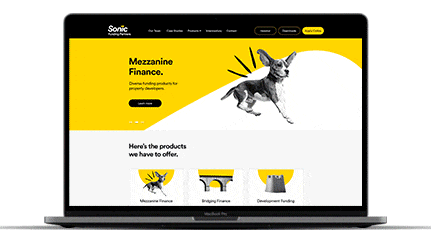Affordable Website Design Solutions for Small Businesses
Affordable Website Design Solutions for Small Businesses
Blog Article
Top Tips for Producing an Impactful Website Layout That Transforms
In today's digital landscape, the significance of an impactful website layout can not be overemphasized, specifically when it involves transforming visitors into clients. To accomplish this, one need to consider a selection of variables, consisting of understanding the target audience, prioritizing customer experience, and optimizing for mobile platforms. In addition, the critical use compelling call-to-actions and a distinct visual hierarchy plays a critical duty in guiding customers via their journey. As we explore these essential elements, it becomes noticeable that the success of your web site pivots on greater than simply appearance; it calls for a thoughtful strategy to layout and performance.

Understand Your Target Market
Understanding your target audience is fundamental to effective site layout, as it prepares for producing an interesting customer experience. Determining that your users are, including their demographics, choices, and actions, enables developers to tailor the internet site's content, layout, and functionality to meet specific needs.
Carrying out thorough market study is important in this procedure. Surveys, interviews, and analytics can provide important understandings into customer assumptions and pain points. By compiling this data, developers can create customer personas that represent different segments of the audience, making sure that layout decisions are educated and appropriate.
In addition, recognizing the target audience aids in selecting suitable style aspects such as color plans, typography, and imagery that resonate with customers. A website that speaks directly to its audience promotes a sense of link and trust, encouraging longer check outs and higher conversion prices.
Eventually, a user-centered method to website design not only enhances customer contentment yet additionally sustains company objectives by driving engagement and commitment. By prioritizing the needs and choices of the target audience, an internet site can efficiently offer its objective and attain wanted end results.
Prioritize Individual Experience
To boost the general effectiveness of a website, prioritizing user experience (UX) is vital (Website Design). A properly designed UX ensures that site visitors can navigate the site effortlessly, find details swiftly, and involve with material meaningfully. This results in raised individual contentment and higher conversion prices
Begin by carrying out user-friendly navigating. Menus must be practically structured, allowing customers to situate essential locations of the website with minimal effort. Uniformity in design elements, such as color pattern and font styles, fosters familiarity, which is important for preserving user interaction.
In addition, think about the packing rate of your web site. A delay of just a few seconds can cause considerable drop-offs, as customers are much less most likely to wait on a slow-loading web page. Streamlining images and optimizing code can enhance efficiency and keep site visitors.
By prioritizing customer experience, you not just develop a more delightful atmosphere for visitors but additionally enhance your brand name's integrity. Inevitably, an emphasis on UX is an investment in the lasting success of your web site.
Enhance for Mobile Tools
Enhancing for mobile phones is essential in today's digital landscape, where an enhancing variety of users access web sites through smart devices and tablets. A mobile-friendly design not just improves user experience yet additionally plays a significant role in boosting internet search engine positions. To attain this, it is important to embrace a receptive style that immediately adjusts to numerous display dimensions and orientations.
%20%5B60%25%5D.jpg)
Filling speed is an additional critical variable; mobile individuals are commonly less individual and expect fast access to information. Maximize images and leverage internet browser caching to improve efficiency. Lastly, examination your internet site on numerous tools and display resolutions to determine and remedy any type of potential use concerns. By focusing on mobile optimization, you ensure that your website remains competitive and successfully involves a broader target market.
Usage Compelling Call-to-Actions
A web site's effectiveness usually hinges on its capability to direct site visitors towards desired activities, making engaging call-to-actions (CTAs) important parts of design. CTAs work as the essential points that direct individuals to engage with the site, whether that indicates making an acquisition, enrolling in a newsletter, or downloading and install a source.
To create effective CTAs, quality is vital. Usage concise language that plainly connects the action you desire the customer to take.
In addition, the layout of CTAs must stand out without being obtrusive. Utilize contrasting colors and clear typefaces to guarantee they capture attention. Furthermore, think about using directional hints, such as arrowheads or images, to guide users toward these switches. By focusing on these elements, organizations can considerably improve user involvement, driving conversions and inevitably achieving their site's goals.
Concentrate On Visual Pecking Order
Efficient website design relies heavily on a well-structured aesthetic power structure that overviews users via web content flawlessly. By organizing aspects in a manner that focuses on information, designers can boost user experience and assist in decision-making. This includes making use of dimension, shade, comparison, and spacing tactically to accentuate the most vital elements of a webpage.
Making use of bigger fonts for headings and subheadings establishes a clear distinction in between different areas, permitting users to scan material effortlessly. Furthermore, employing contrasting shades for buttons and calls-to-action can capture user interest and motivate communication. Whitespace is an additional necessary component; it protects against mess and allows users to concentrate on essential messages without distractions.
Images and graphics this link must enhance the message while additionally sticking to the well-known power structure, reinforcing the total message (Website Design). Uniformity in style elements, such as color pattern and typography, more reinforces the aesthetic hierarchy, making navigating user-friendly

Conclusion
In final thought, reliable site design necessitates a detailed understanding of the target audience, prioritization of customer experience, and mobile optimization. Ultimately, a well-executed internet site style serves as a critical element in driving customer actions and attaining company purposes.
Report this page